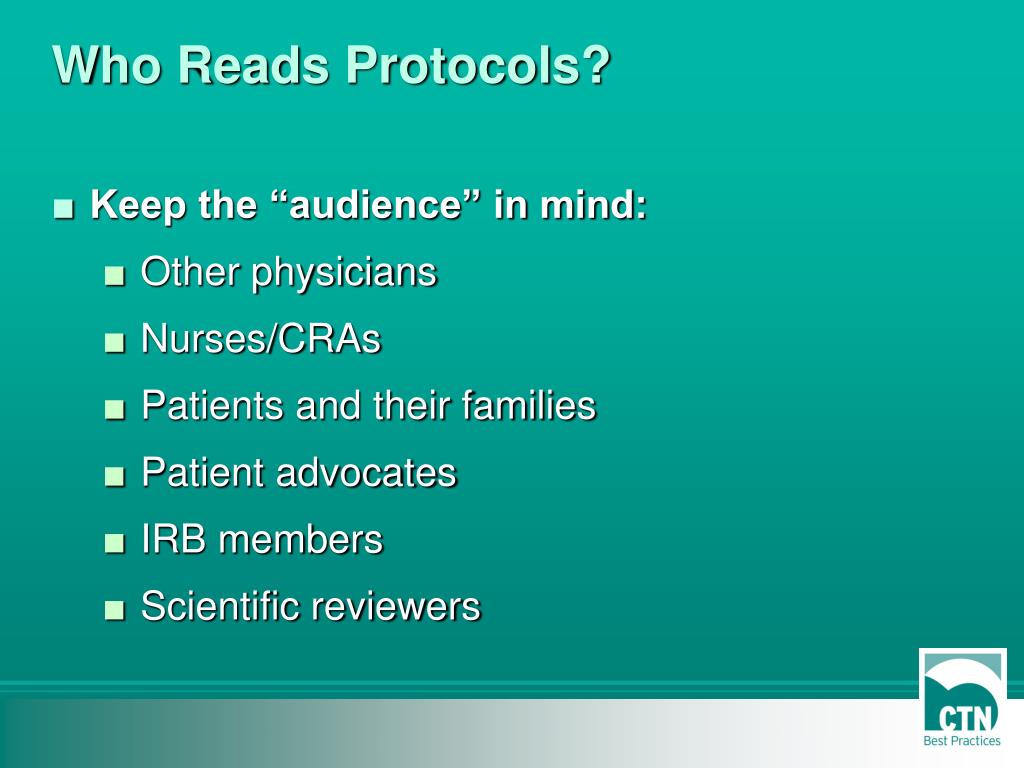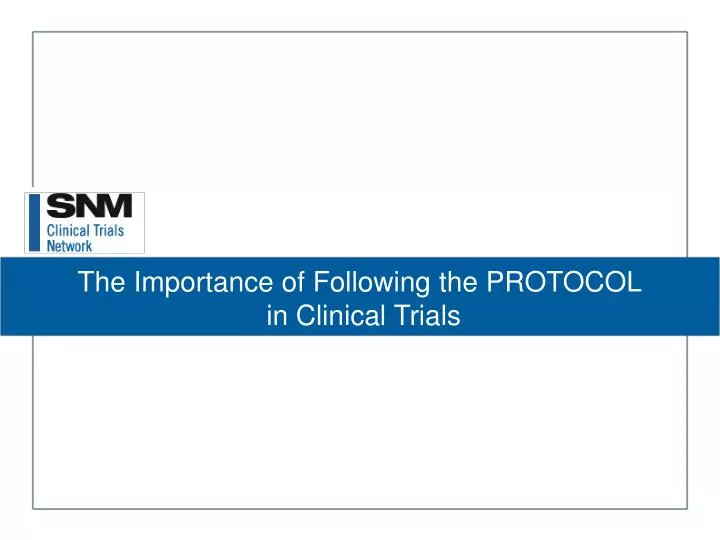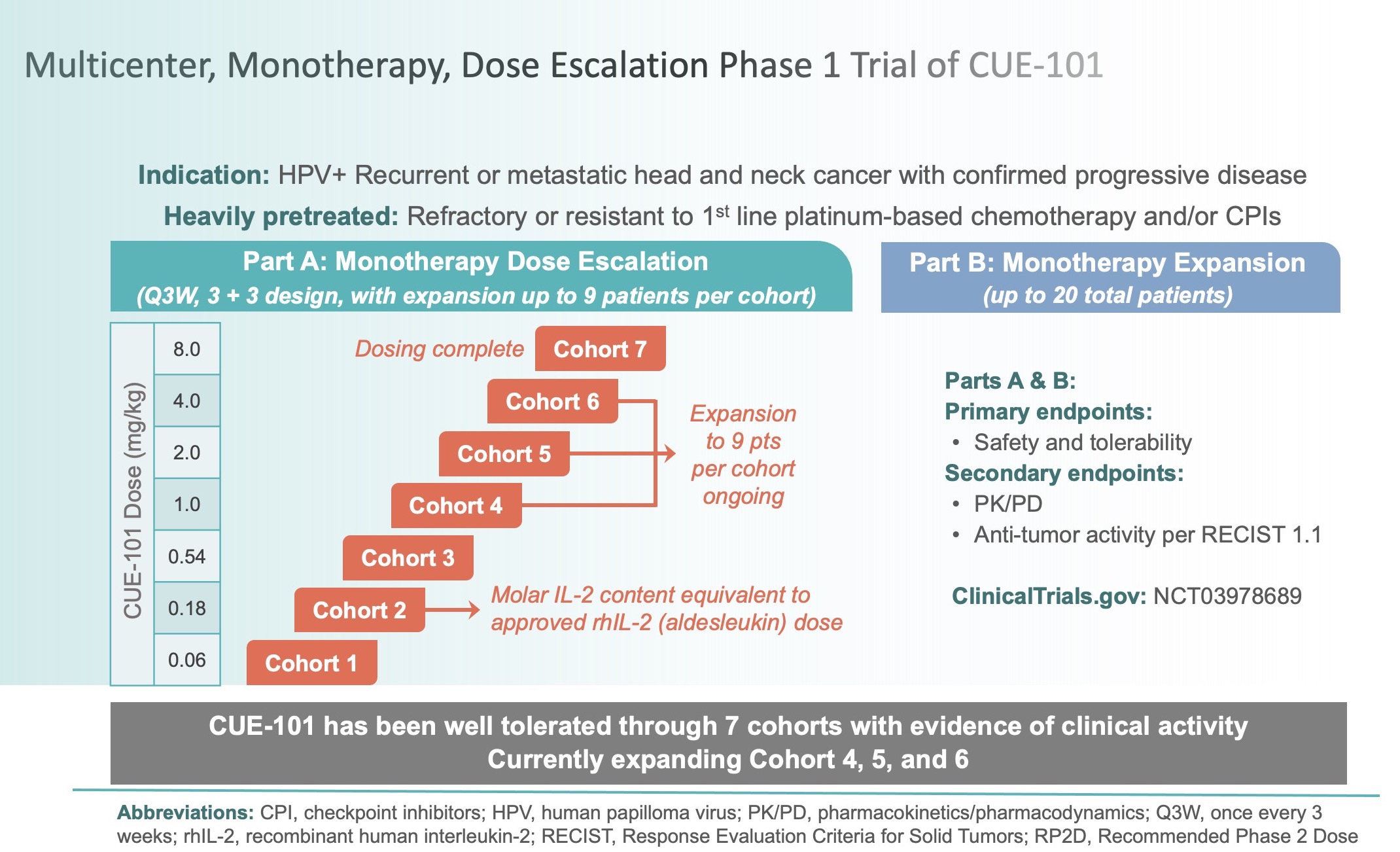Which Of The Following Is Not A Clinical Protocol

The medical community often relies on structured guidelines to ensure patient safety and consistent care. But understanding what doesn't constitute a clinical protocol is just as crucial as knowing what does. This article delves into the nuanced distinctions, clarifying potential areas of confusion and highlighting the importance of proper identification of these protocols.
The core question this piece addresses is, in a landscape filled with medical directives, what falls outside the definition of a clinical protocol? Identifying these non-protocols is vital for preventing misapplication of guidelines and ensuring appropriate medical decision-making. This understanding directly impacts healthcare professionals, patients, and the overall efficiency and safety of medical practice.
Defining Clinical Protocols
A clinical protocol is a pre-defined set of procedures and guidelines used in healthcare settings. It aims to standardize treatment for specific conditions or situations. These protocols are usually evidence-based, developed by expert panels, and regularly updated to reflect new research and best practices.
Key characteristics of a clinical protocol include a detailed description of the steps involved, specific inclusion and exclusion criteria, and clear outcome measures. They also often include algorithms or flowcharts to guide decision-making. Their purpose is to reduce variability in care and improve patient outcomes.
What Isn't a Clinical Protocol?
Several types of medical directives are often confused with clinical protocols but lack key defining features. Understanding these distinctions is crucial for proper application of medical guidance.
General Medical Information
General medical information, such as that found on websites like Mayo Clinic or WebMD, is not a clinical protocol. This information is designed to educate the public about various conditions, symptoms, and treatments. It lacks the specificity and standardized procedure of a true clinical protocol.
While helpful for raising awareness and providing background knowledge, this type of information doesn't offer the detailed, step-by-step guidance needed for clinical decision-making. It is not intended to replace the judgment of a qualified healthcare professional.
Textbook Excerpts
While textbooks provide in-depth knowledge and are used extensively in medical education, excerpts from them aren't protocols. Textbooks serve as comprehensive resources but generally lack the concise, actionable format characteristic of a true clinical protocol. They are designed to provide a broad understanding of medical concepts, not to dictate specific treatment pathways.
Textbook chapters often present multiple approaches to a given condition, leaving the practitioner to decide which is most appropriate. In contrast, protocols offer a clearly defined, preferred course of action based on specific patient characteristics.
Individual Physician Preferences
A doctor's personal preference or standard practice does not equate to a clinical protocol. While experience and clinical judgment are critical components of medical care, individual habits should not be confused with evidence-based protocols. Protocols represent consensus guidelines developed through rigorous review of scientific data.
Relying solely on personal preferences can lead to inconsistencies in care and potentially compromise patient outcomes. Clinical protocols exist to provide a standardized framework to minimize these discrepancies.
Manufacturer's Instructions for Medical Devices
Instructions for use (IFU) provided by manufacturers of medical devices are not clinical protocols. While essential for the safe and effective use of specific equipment, IFUs focus on the technical aspects of the device. They don't provide broader guidance on patient assessment, diagnosis, or the overall treatment plan.
IFUs detail how to operate the device and ensure its proper function. Protocols, on the other hand, specify when and how the device should be integrated into a comprehensive treatment strategy.
Hospital Policies
While hospital policies may influence clinical practice, not all policies are clinical protocols. Hospital policies can cover a wide range of topics, including administrative procedures, safety regulations, and infection control measures. Only policies that specifically outline a standardized approach to a particular medical condition or situation would qualify as a clinical protocol.
For example, a hospital policy on hand hygiene is not a clinical protocol. However, a hospital policy outlining the steps to manage a patient experiencing a stroke, developed in accordance with established guidelines, would be considered a protocol.
The Importance of Accurate Identification
Accurate identification of clinical protocols is crucial for several reasons. Misinterpreting general information as a protocol can lead to inappropriate treatment decisions. It can also result in a lack of standardization, potentially increasing the risk of errors and adverse outcomes.
Conversely, failing to recognize a valid clinical protocol can result in missed opportunities to improve patient care. Utilizing properly vetted protocols can enhance efficiency, reduce costs, and promote better outcomes.
Conclusion
Distinguishing between clinical protocols and other forms of medical guidance is essential for all healthcare professionals. Recognizing the defining characteristics of a clinical protocol—its evidence-based nature, standardized approach, and specific inclusion criteria—is key to providing optimal patient care. By avoiding the pitfalls of misidentification, practitioners can ensure that their decisions are informed by the best available evidence and contribute to improved healthcare outcomes.


















